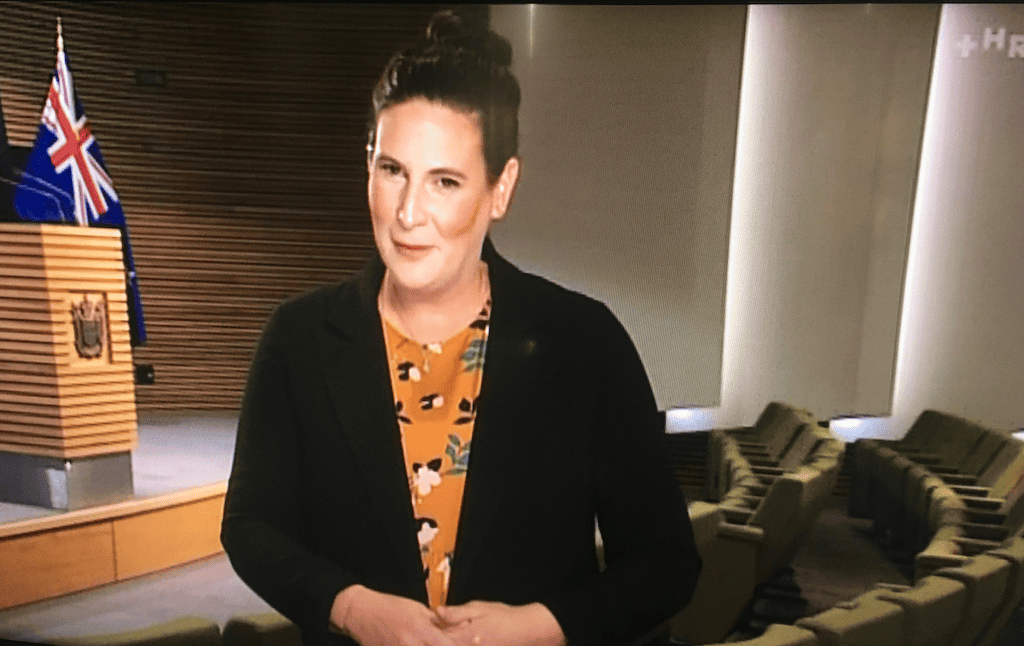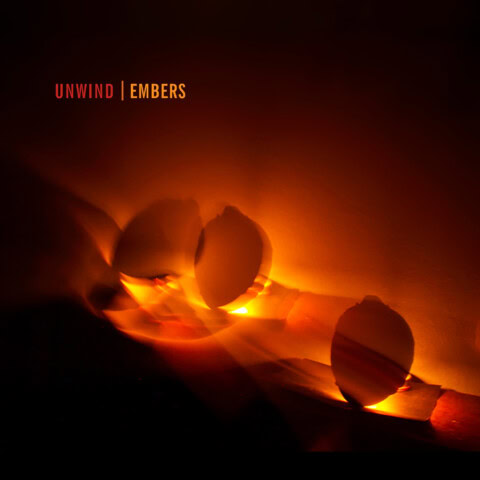Kiwi space-rock band Ragnarok’s 1975 debut has been rediscovered and reissued. GARY STEEL with an in-depth assessment.
 Nineteen seventy-five was a weird year for New Zealand music. Overseas, progressive rock had peaked commercially and creatively a few years before with colossal albums like Close To The Edge (Yes), Dark Side Of The Moon (Pink Floyd) and Trilogy (Emerson, Lake & Palmer). But by 1974, prog rock’s big guns were edging towards self-parody as they conquered the lucrative American stadium circuit. The genre seemed to have flipped from the sublime to the ridiculous in an instant, with sprawling triple live sets and keyboard wizard Rick Wakeman famously eating an Indian takeaway onstage during a drum solo in the preposterous Tales From The Topographic Oceans.
Nineteen seventy-five was a weird year for New Zealand music. Overseas, progressive rock had peaked commercially and creatively a few years before with colossal albums like Close To The Edge (Yes), Dark Side Of The Moon (Pink Floyd) and Trilogy (Emerson, Lake & Palmer). But by 1974, prog rock’s big guns were edging towards self-parody as they conquered the lucrative American stadium circuit. The genre seemed to have flipped from the sublime to the ridiculous in an instant, with sprawling triple live sets and keyboard wizard Rick Wakeman famously eating an Indian takeaway onstage during a drum solo in the preposterous Tales From The Topographic Oceans.
Progressive rock had never quite taken off in NZ, largely because the gear – primarily Moog synthesisers, Mellotrons and big PA systems – was just too expensive to import, as it was laden with government taxes. But just as there were stirrings in the overseas music mags about a new, gritty, back-to-basics rock and roll that was set to revolutionise the scene, Split Enz and Ragnarok went and released our two best prog albums.
Would you like to support our mission to bring intelligence, insight and great writing to entertainment journalism? Help to pay for the coffee that keeps our brains working and fingers typing just for you. Witchdoctor, entertainment for grownups. Your one-off (or monthly) $5 or $10 donation will support Witchdoctor.co.nz. and help us keep producing quality content. It’s really easy to donate, just click the ‘Become a supporter’ button below.
Mental Notes (Split Enz) was recorded in Australia and would be that group’s creative high point, with its dark and psychotic songs (penned and sung by the yin-yang partnership of Phil Judd and Tim Finn) unleashing a music of unease that reflected the reality of growing up in the stifling conformity of 1960s NZ. The self-titled debut by Ragnarok, on the other hand, avoided self-examination, instead immersing itself in mystical Viking mythology. Mental Notes and Ragnarok were (and are) both stunning works, but unlike the Enz, Ragnarok lacked the connections or the management and the small label it was released on subsequently went out of business. It was as if it had never existed before the disc began turning up occasionally on Discogs for insane collector prices.
I was almost done with progressive rock by the time Ragnarok came along. I had found a copy of the first New York Dolls album in my local (Hamilton) second-hand record shop and imported Patti Smith’s Horses from the US. I was also getting into the proto-punk/rock and roll of the Flamin’ Groovies and the 1960s “garage” compilation Nuggets. I was 16 and full of pent-up aggression, and suddenly, mainstream prog seemed a little slow and sedate and flowery. (Its radical fringes remained of interest for many years, but that’s another story…)
 Still, I was up for hearing just about anything and everything at that age, and when I saw Split Enz perform at the Founders’ Theatre that year, they completely blew my nascent mind. Here was a band with the imagination and musical chops of progressive rock but underneath there was real danger and oddity.
Still, I was up for hearing just about anything and everything at that age, and when I saw Split Enz perform at the Founders’ Theatre that year, they completely blew my nascent mind. Here was a band with the imagination and musical chops of progressive rock but underneath there was real danger and oddity.
I rushed out to buy the Ragnarok album after reading about it in NZ music freebie Hotlicks, and at first, was kind of underwhelmed. As drummer Mark Jayet explains in my Audioculture story about the band, the vinyl pressing wasn’t great so the sound didn’t exactly jump out of my brother’s Bell Oriana speakers.
 I persisted, however, and the music slowly grew on me. It was hard to peg. Lea Maalfrid sang on only three songs but her vocals were so strong and distinctive that initially, I found them hard to like. She sounded possessed, and while her lower notes vaguely resembled Rush’s Geddy Lee, she could also hit the high notes and wail almost operatically. Ramon York was also a decent vocalist and did the duties elsewhere on the record, where required.
I persisted, however, and the music slowly grew on me. It was hard to peg. Lea Maalfrid sang on only three songs but her vocals were so strong and distinctive that initially, I found them hard to like. She sounded possessed, and while her lower notes vaguely resembled Rush’s Geddy Lee, she could also hit the high notes and wail almost operatically. Ramon York was also a decent vocalist and did the duties elsewhere on the record, where required.
It never occurred to me at the time but as a live band, Ragnarok had to play a wide selection of material to keep the punters satisfied, and this diversity must had an impact on their own compositions. The instrumentation – especially Mellotron and synthesiser – helped to determine the sound of the group and differentiate them from other NZ bands of the era, but a careful listen to Ragnarok today reveals a plethora of influences, the most obvious of which is psychedelia in all its lysergic glory.
The Mellotron is a key component. The instrument might have been created to imitate the sound of the string section of an orchestra, but thankfully, it failed badly. At best, it’s a highly defective orchestra, but ironically, it’s the instrument’s deficiencies that bless it with that extraordinarily emotive sound. It’s there adding immeasurably to some of The Beatles’ psychedelic-era tracks, but it was really The Moody Blues who grasped its real potential and then King Crimson on their epochal In The Court Of The Crimson King who found that it could soundtrack the apocalypse and capture the sadness of the end of time. It became a staple for progressive rock bands like Genesis, so of course Ragnarok had to have one.
The Ragnarok’s album’s careful remastering at Stebbings reveals layers I’ve never heard before, and although on the one hand, the album is very much of its era, it’s also somehow beyond time and remains an enthralling listen in 2022.
Fenris is apparently the wolf giant God in Norse mythology and is destined to fight and kill Odin. ‘Fenris’ the song, by Lea, opens the album on a particularly strong note, with Ramon’s cut-glass guitar figures echoing the pretty psychedelia of Jefferson Airplane’s Jorma Kaukonen and the cosmic Mellotron duetting with squiggly synth lines that may (or may not be) a synth-guitar. Lea belts out lines like “Fenris the apocalyptic mover!” and ‘Fenris you’re the beast in the heart of me!” while Mark and Ross lay down some especially tight drum and bass. One thing the remastering has really brought out is the physicality of the rhythm section and on this song, Ross’s almost Jack Bruce-like bass-as-guitar playing.
 The second Lea vocal (and song) is the album’s third track, ‘Fire In The Sky’, and apparently, this is the song that set their live shows burning. Her vocal performance is practically possessed and she spits out lines like: “I gave you everything you could possibly need/Only to discover your hate and your greed.” And of course, it’s vengeance time, which requires some actual high-pitched wailing. It’s pretty special, with its unusual fade-in at the start, and its eventual fade-out to the sound of sweeping synths that sound like licking, burning flames and lava seeping down hillsides.
The second Lea vocal (and song) is the album’s third track, ‘Fire In The Sky’, and apparently, this is the song that set their live shows burning. Her vocal performance is practically possessed and she spits out lines like: “I gave you everything you could possibly need/Only to discover your hate and your greed.” And of course, it’s vengeance time, which requires some actual high-pitched wailing. It’s pretty special, with its unusual fade-in at the start, and its eventual fade-out to the sound of sweeping synths that sound like licking, burning flames and lava seeping down hillsides.
Lea remembers nothing about ‘Caviar Queen’, her third and final vocal and a song that’s credited to the whole group. But to me, it’s one of the most memorable tracks and it feels like it’s the one the crowds would have got up to boogie to. Ramon contributes a brilliant bright repeated guitar motif, the rhythm groove is tight as, and in the middle, there’s a great squally guitar solo that’s pure psych. Strong female vocalists were thin on the ground in the mid-‘70s and Lea’s performance here is especially impactful as she sings lines like: “I am the woman you’ve always wanted/I come to you in your dreams,” and “I have ruled over mountains and men/For ages gone by”. Golly!
While Lea’s contributions are fantastic, the non-Lea tracks are, in their own way, just as great. ‘Butterfly Sky’, for instance, features Ramon on what sounds like a Bowie-infused vocal, and another gorgeous guitar motif. But it’s really a deeply sad love ballad with a spectacularly emotive guitar solo and blankets of Andre’s Mellotron making it sound even more mournful.
‘Rainbow Bridge’ (referencing Hendrix?) is a watery (mostly) instrumental that slowly builds. This is Ragnarok at its most cosmic and psychedelic with synths sweeping around the stereo spectrum. Towards the end, it adds an ethereal vocal which implores the listener to “come spread your love around and around” and could almost, for a moment or two, actually be The Moody Blues.
‘Raga’, the first song on Side 2 of the vinyl, is credited to Lea but is an echoey sci-fi instrumental with lovely aqueous guitar, sweet basslines, bubbling synth and dreamy Mellotron that soon gets into a beautiful, relaxed groove: very autumnal, it reminds me a lot of just post-Syd Pink Floyd. The same is true of ‘Dream’ (the longest track at 7:08), with its gentle guitar figure and phased drums. After some extended atmospherics, the track changes tack with a repeated synth phrase straight out of the Wendy Carlos book.
And that’s just about it, except for the last and eighth track, ‘Dawning Horn’, a mystical freak-out with a cyborg voice undoubtedly influenced by Doctor Who that builds to a crescendo before collapses, whereupon the end is signalled by the record slowing down and stopping – an old but effective trick.
Ragnarok is still a fantastic record, and for the first time, it actually sounds as good as it is. There are a couple of very small glitches that hopefully will be fixed with any further iterations: The Jayet brothers’ surname is given an extra ‘t’ on the liner notes and tracks 12 and 13 are erroneously swapped. Would it be churlish to mention that the synth white noise segues between several tracks on the original vinyl but not on the reissue? While these points are worth mentioning, they’re far from deal-breakers, as the album sounds about 50 per cent better than the original vinyl and the drums and bass in particular are forward in the mix and make the whole thing come alive.
While the vinyl reissue of Ragnarok contains the eight songs of the original, the CD issue features a further 10 tracks. These might be surplus to requirements for the average progressive rock fan, but essential for Kiwi music connoisseurs, especially those with a liking for that late 1960s/early 1970s psychedelic pop/rock crossover sound.
First up is ‘Born To Wander’, a smoochy torch song by Lea with just touches of Mellotron adding to the voice and piano. Although a vastly different style, this is a gorgeous song and a stunning composition and vocal performance.
There’s a radio ad with a hilarious hammy voice-over followed by two lo-fi recordings (‘Raga’ and ‘Butterfly Sky’, not the other way round) of a radio appearance with an over-the-top DJ introduction.
From here on in we go back in time to the early ‘70s. ‘Crazy Feeling’ (1973) is a song Lea sang in a short-lived group called Transformer with her then-husband Tony Wyber, and it’s a boogie-rock song with a lusty vocal fairly typical of the era. But where is the b-side?
 The rest of the CD features no less than five songs by early ‘70s group Flying Wild (see album compiler Grant Gillanders’ Audioculture story here). Led by John Fielding, the group included later Ragnarok members Andre Jayet and Ross Muir. The group hold the distinction of composing/performing New Zealand’s first rock opera in 1970 (it was never recorded, sadly) but did release the two singles that comprise four of these tunes, while the fifth is a lone demo.
The rest of the CD features no less than five songs by early ‘70s group Flying Wild (see album compiler Grant Gillanders’ Audioculture story here). Led by John Fielding, the group included later Ragnarok members Andre Jayet and Ross Muir. The group hold the distinction of composing/performing New Zealand’s first rock opera in 1970 (it was never recorded, sadly) but did release the two singles that comprise four of these tunes, while the fifth is a lone demo.
Fans of post-Abbey Road late ‘60s/early ‘70s pop/rock will instantly identify the various stylistic tics at work here. At various times I was reminded of the Pretty Things 1970 album Parachute, Kiwi pop/rock hitmakers The Fourmyula, LA group The Turtles and California psych-rockers Spirit. Each of the songs is maybe just a bit different for the band to tie down a definitive sound, but by the same token, each is impressive in its own way. Fielding went on to write jingles and he definitely displays a talent for catchy lyrics and phrases. The final song, ‘She’s Coming’ (tongue-in-cheek?) is a scratchy acetate demo with wah-wah and creamy organ. What a pleasure it is to get to hear these incredibly rare and previously forgotten NZ pop/rock tracks.
Gary Steel’s new Ragnarok story and interview with Lea Maalfrid and Mark Jayet can be found here.
Gary’s previous Ragnarok profile can be found here.
Grant Gillanders’ Flying Wild profile and interview with John Fielding can be found here.















